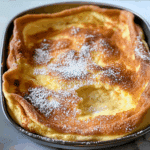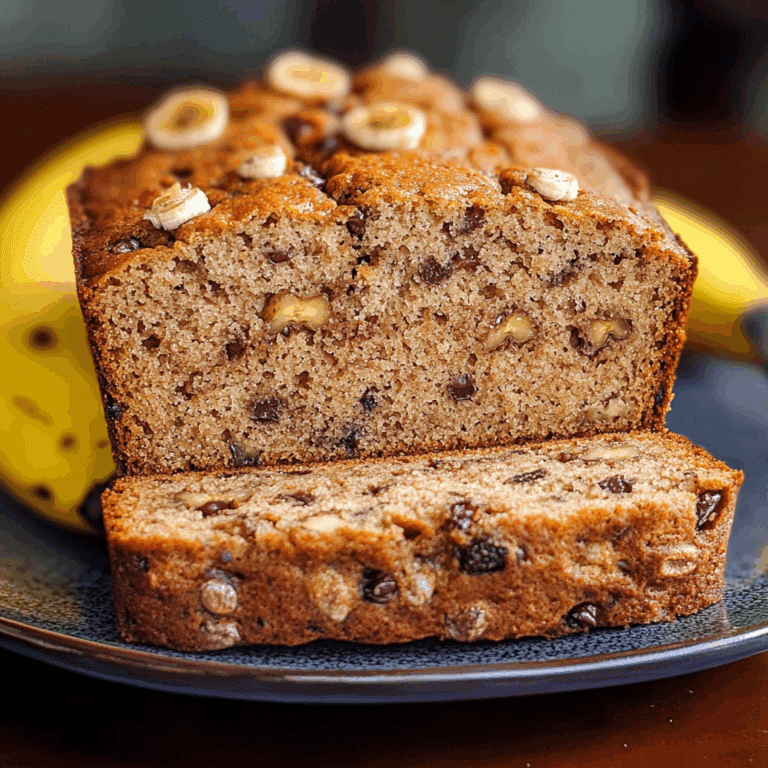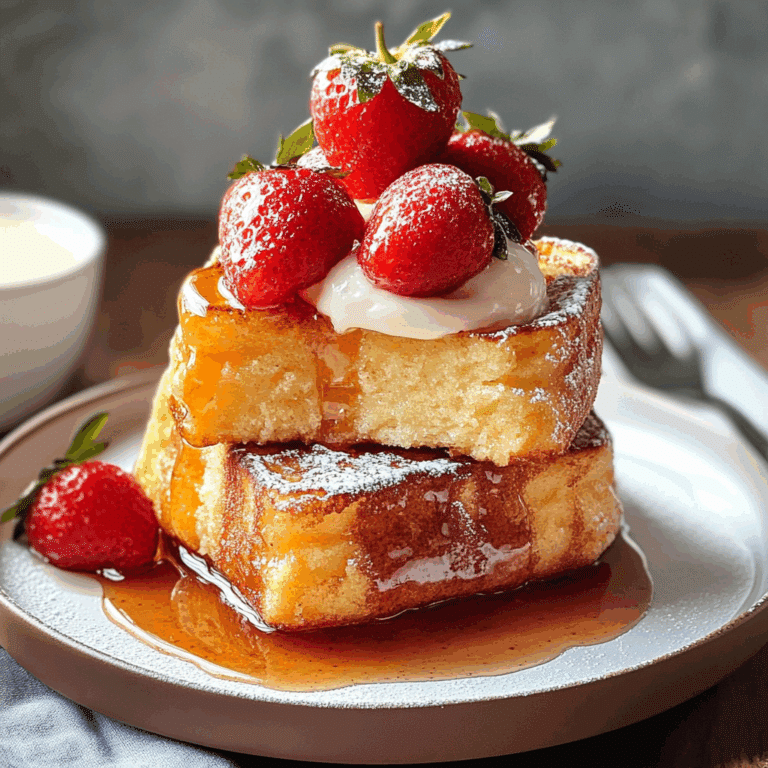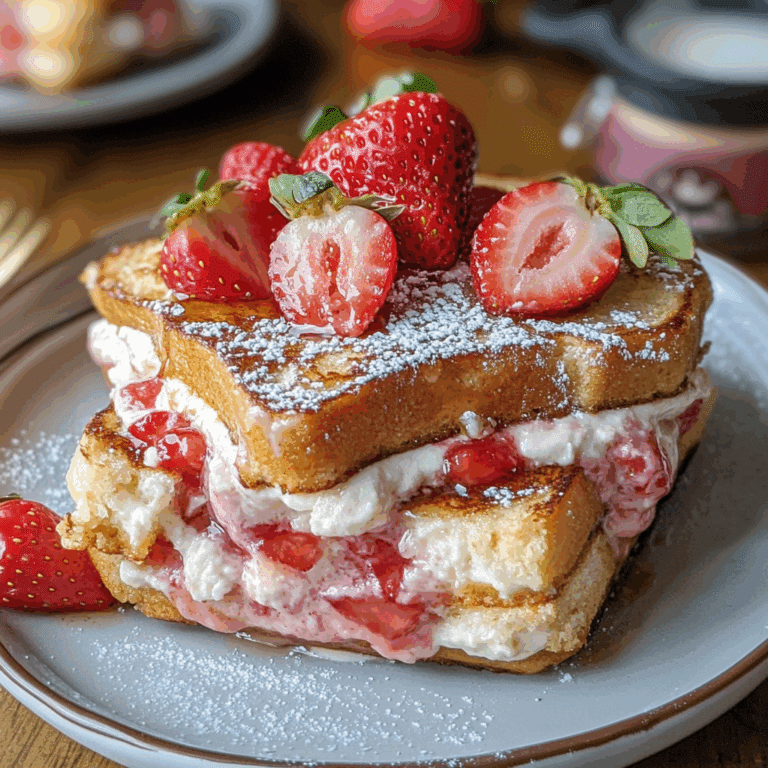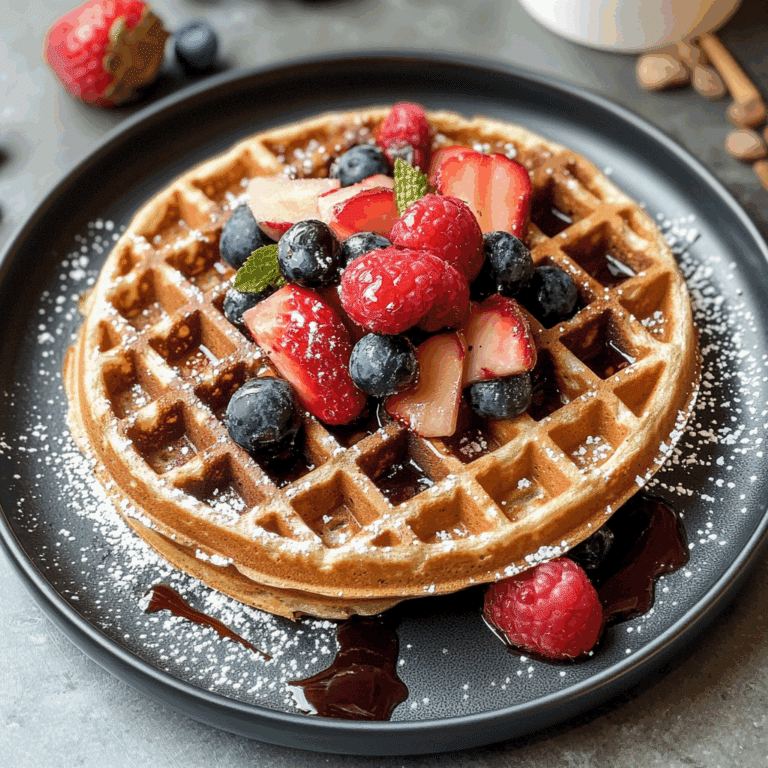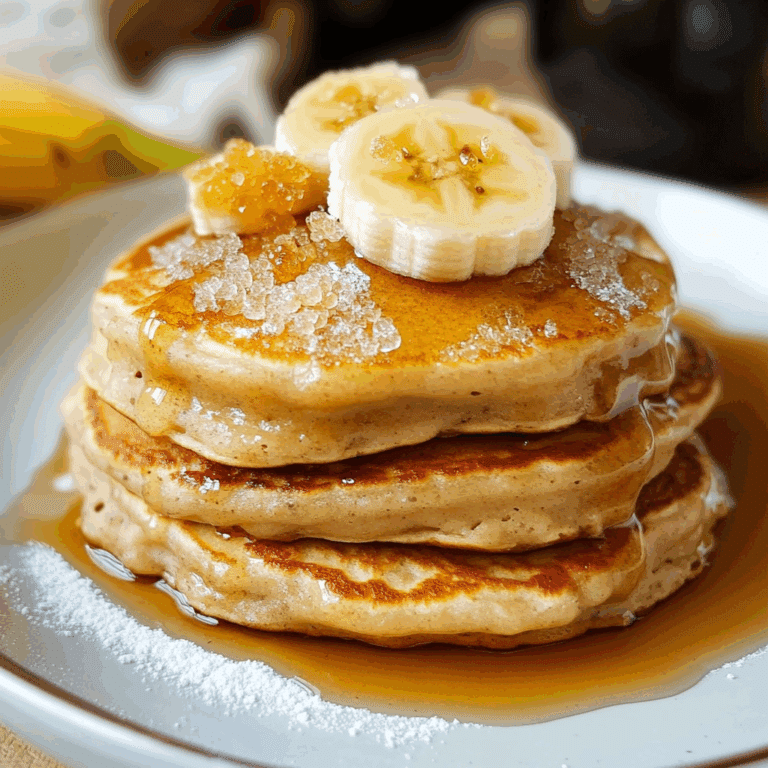How to Make Baked German Pancake Perfectly
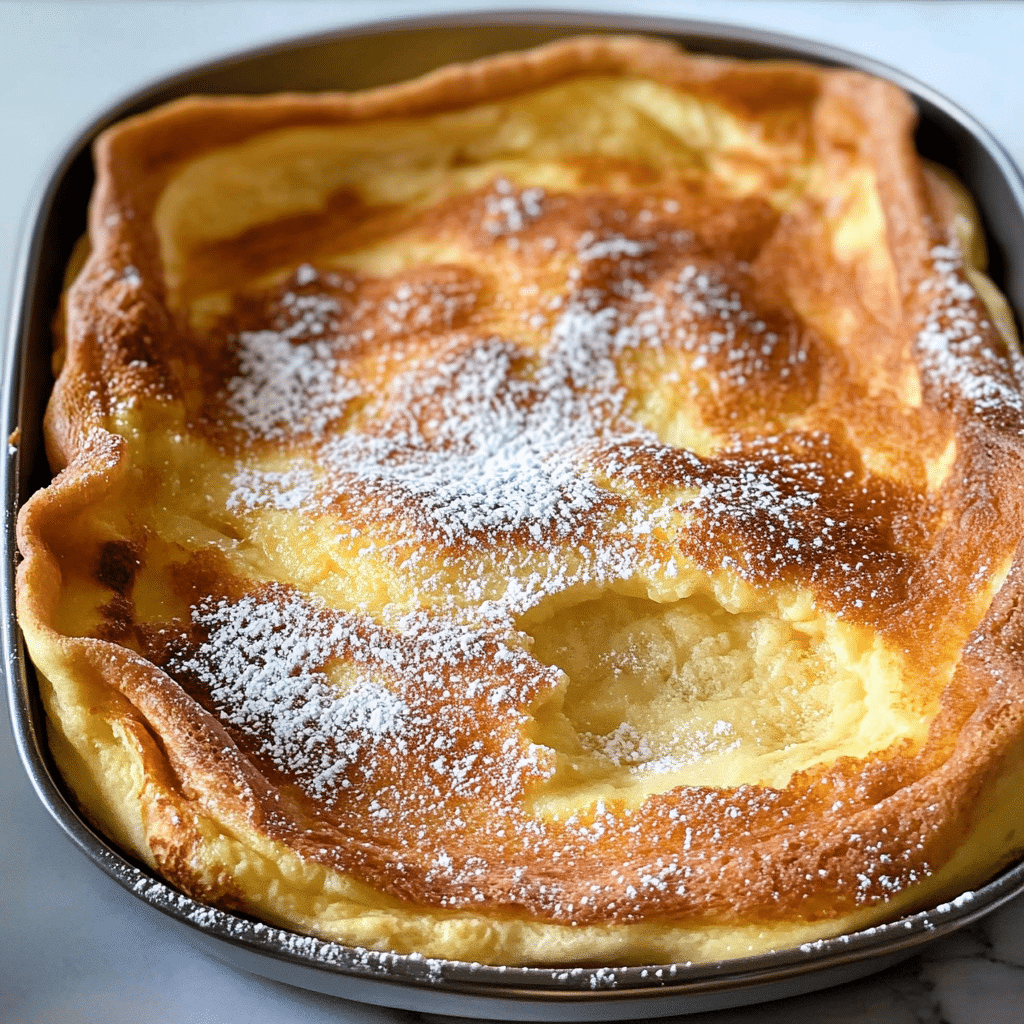
If you’ve ever wanted to master a breakfast classic that’s both impressive and irresistibly delicious, this Baked German Pancake is your go-to recipe. Perfectly fluffy, golden, and slightly crisp around the edges, this dish brings together simple ingredients to create a show-stopping meal. Whether for a Sunday brunch or a cozy weekend morning, learning how to make a Baked German Pancake perfectly will quickly become your new favorite kitchen triumph.
Why You’ll Love This Recipe
- Effortless elegance: This recipe transforms basic ingredients into a stunning dish with minimal effort.
- Fluffy and light texture: The baked batter puffs beautifully for a cloud-like finish every time.
- Versatile flavor base: It’s a perfect canvas for sweet or savory toppings or mix-ins.
- Hands-off baking: Once in the oven, you can relax without constant attention or flipping.
- Family-friendly: Appeals to all ages and makes an impressive plate to share.
Ingredients You’ll Need
Simple, wholesome ingredients make the magic happen in this Baked German Pancake. Each component brings something essential to the table, from richness and structure to flavor and color.
- All-purpose flour: Provides the necessary structure while keeping the pancake light and tender.
- Eggs: The star of the show, eggs help the pancake rise and create that signature fluffy texture.
- Milk: Adds moisture and a creamy finish to the batter.
- Sugar: Balances flavors and helps the pancake caramelize to a golden brown.
- Butter: Adds richness, prevents sticking, and gives the edges a crisp, toasted finish.
- Vanilla extract: Infuses subtle warmth and enhances the overall flavor.
- Salt: A pinch is critical to highlight the sweetness and balance tastes.
Variations for Baked German Pancake
One of the best things about this classic recipe is how easy it is to customize. Feel free to tailor your Baked German Pancake to fit any dietary needs or flavor cravings.
- Fruit-filled: Add fresh berries or thin apple slices on top before baking for natural sweetness and moisture.
- Gluten-free twist: Use a gluten-free flour blend to make it safe for gluten-sensitive diets without sacrificing texture.
- Spiced version: Sprinkle cinnamon or nutmeg into the batter for comforting, warming notes.
- Savory style: Skip the sugar and vanilla, and fold in grated cheese, herbs, or sautéed vegetables for a delicious savory option.
- Dairy-free option: Substitute the milk and butter for plant-based alternatives to accommodate lactose intolerance.

How to Make Baked German Pancake
Step 1: Prepare Your Oven and Pan
Preheat the oven to 425°F (220°C) and place a 9×13-inch baking dish or cast iron skillet inside. Heating the pan ensures the butter sizzles immediately, giving you that delightfully crisp crust.
Step 2: Whisk the Batter
In a mixing bowl, beat together the eggs, milk, sugar, vanilla, and salt until fully combined. Sift in the flour gradually to avoid lumps and stir gently until the batter is smooth and just incorporated.
Step 3: Add Butter to Hot Pan
Carefully remove the hot pan from the oven and add the butter, swirling until it melts and coats the bottom evenly.
Step 4: Pour Batter and Bake
Immediately pour the batter into the hot, buttered pan. Return to the oven and bake for 15–20 minutes, or until the pancake has puffed up spectacularly and turned a deep golden brown.
Step 5: Remove, Rest, and Serve
Take the pancake out carefully—the edges are crisp and delicate. Allow it to cool for a couple of minutes, during which it will deflate slightly but remain fluffy. Slice and serve warm.
Pro Tips for Making Baked German Pancake
- Use room temperature eggs and milk: They blend better and help the pancake rise evenly.
- Don’t overmix the batter: Stir just until combined to keep the texture tender, not chewy.
- Preheat your pan thoroughly: This creates the signature crispy edges that make the dish irresistible.
- Serve immediately: Baked German Pancake is best enjoyed fresh as it begins to lose its puff and crispness over time.
- Experiment with toppings: Sweet syrups, fresh fruit, or a dusting of powdered sugar elevate the experience.
How to Serve Baked German Pancake
Garnishes
A classic dusting of powdered sugar is simple and elegant, but don’t stop there—consider fresh berries, a dollop of whipped cream, or a drizzle of maple syrup or lemon juice for a bright contrast that highlights the pancake’s richness.
Side Dishes
Serve alongside crispy bacon or sausage links for a savory balance, or fresh fruit salad to add vibrant freshness and a burst of sweet juiciness to your plate.
Creative Ways to Present
Try folding in fresh herbs and cheese to create a savory option, or sprinkle cinnamon sugar on top before baking for a cinnamon-toast-style treat. You can also cut the pancake into fingers for easy sharing at brunch parties.
Make Ahead and Storage
Storing Leftovers
Keep leftover Baked German Pancake in an airtight container in the refrigerator for up to 2 days, though it’s always best enjoyed fresh for that ideal texture.
Freezing
You can freeze slices individually separated by parchment paper, wrapped tightly, for up to a month. This makes it easy to pop a piece into the toaster or oven when needed.
Reheating
Reheat leftovers in a warm oven at 350°F (175°C) for 5–10 minutes to revive crisp edges and restore fluffiness, or use a toaster oven for convenience.
FAQs
Can I make Baked German Pancake dairy-free?
Yes! Simply swap the milk for almond, oat, or soy milk, and use a plant-based butter alternative to keep the recipe dairy-free while still achieving great texture.
Why does my Baked German Pancake deflate after baking?
It’s normal for the pancake to rise dramatically in the oven and then gently deflate as it cools; this is part of its charm and texture.
Can I add fruit directly into the batter?
Yes, but be cautious with very juicy fruits like berries as they might release moisture and affect the crispiness—you could also add fruit as a topping instead.
What pan is best for making Baked German Pancake?
A well-seasoned cast iron skillet or an oven-safe baking dish works best to evenly conduct heat and produce crispy edges.
How long can I leave the batter before baking?
For optimal rise and texture, use the batter immediately after mixing; resting it can cause the pancake to lose some fluffiness.
Final Thoughts
Trying your hand at this Baked German Pancake will bring a delightful new breakfast or brunch favorite into your kitchen. With its simple ingredients, impressive appearance, and wonderfully fluffy texture, it’s a dish that invites creativity and sharing. So grab your eggs and flour and get ready to enjoy every bite of this golden, cloud-like delight!
Related Posts
- Easy Shakshouka Recipes to Try Today
- How to Make Crispy German Potato Pancakes
- Easy McDonald’s Sausage McMuffin at Home Recipe
Baked German Pancake
Master the classic Baked German Pancake with this effortless recipe that produces a fluffy, golden, and slightly crisp morning delight. Perfect for brunch or a cozy weekend breakfast, this versatile baked treat uses simple ingredients to deliver cloud-like texture and rich flavor. Enjoy it sweet with fruit and syrup or savory with cheese and herbs, making it a family favorite and an impressive plate to share.
- Prep Time: 10 minutes
- Cook Time: 15-20 minutes
- Total Time: 25-30 minutes
- Yield: 6 servings 1x
- Category: Breakfast
- Method: Baking
- Cuisine: German
- Diet: Vegetarian
Ingredients
Dry Ingredients
- 3/4 cup all-purpose flour
- 1 tablespoon sugar
- Pinch of salt
Wet Ingredients
- 3 large eggs
- 2/3 cup milk
- 1 teaspoon vanilla extract
Other
- 2 tablespoons butter
Instructions
- Prepare Your Oven and Pan: Preheat the oven to 425°F (220°C) and place a 9×13-inch baking dish or a well-seasoned cast iron skillet inside to heat. This ensures the pan is hot, which will give the pancake a delightfully crisp crust.
- Whisk the Batter: In a mixing bowl, beat together the eggs, milk, sugar, vanilla extract, and salt until fully combined. Gradually sift in the all-purpose flour to avoid lumps and stir gently just until the batter is smooth and incorporated.
- Add Butter to Hot Pan: Carefully remove the heated pan from the oven and add the butter. Swirl it around until it melts completely and coats the bottom evenly.
- Pour Batter and Bake: Immediately pour the prepared batter into the hot, butter-coated pan. Return it to the oven and bake for 15 to 20 minutes, or until the pancake has puffed up spectacularly and turned a deep golden brown.
- Remove, Rest, and Serve: Carefully take the pancake out of the oven as the edges are crisp and delicate. Allow it to cool for a couple of minutes to let it deflate slightly while remaining fluffy. Slice and serve warm with your choice of toppings.
Notes
- Use room temperature eggs and milk for better blending and even rising.
- Do not overmix the batter to maintain a tender, fluffy texture.
- Preheat your pan thoroughly to achieve signature crispy edges.
- Serve the pancake immediately to enjoy its puffiness and crispness at their peak.
- Try various toppings such as powdered sugar, fresh fruit, whipped cream, maple syrup, or lemon juice to complement the richness.
Nutrition
- Serving Size: 1/6 of recipe
- Calories: 230
- Sugar: 7g
- Sodium: 150mg
- Fat: 10g
- Saturated Fat: 6g
- Unsaturated Fat: 3g
- Trans Fat: 0g
- Carbohydrates: 25g
- Fiber: 1g
- Protein: 7g
- Cholesterol: 165mg
Keywords: Baked German Pancake, Dutch Baby, breakfast, brunch, fluffy pancake, oven-baked pancake

